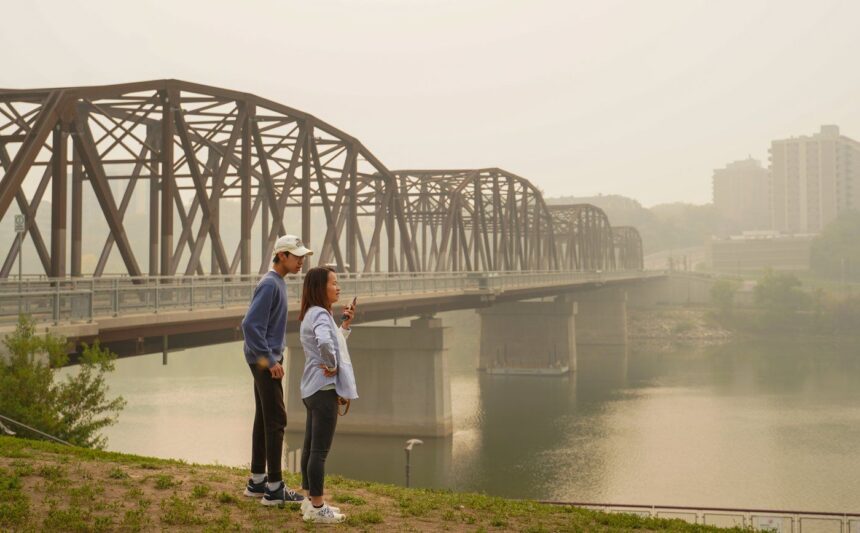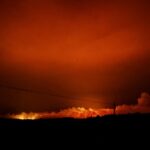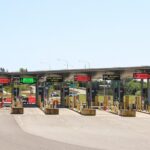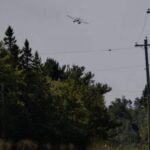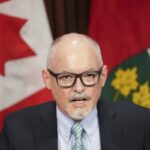The skyline of Saskatchewan’s major cities disappeared behind a thick veil of smoke Tuesday as Environment Canada issued air quality alerts for Regina and Saskatoon, marking the third consecutive week of wildfire-related warnings for the province this summer.
Visibility dropped to less than one kilometer in parts of Regina by midday as smoke from northern fires drifted south, prompting health officials to warn residents about the significant risks posed by prolonged exposure to particulate matter.
“What we’re seeing is PM2.5 concentrations exceeding 150 micrograms per cubic meter—that’s about six times what we consider acceptable for human health,” explained Dr. Mira Patel, Saskatchewan’s environmental health director. “These aren’t just visibility issues; we’re talking about serious respiratory concerns, especially for vulnerable populations.”
The Air Quality Health Index reached 9 out of 10 in both cities by Tuesday afternoon, classified as “high risk” and prompting officials to recommend that outdoor activities be postponed, particularly for children, seniors, and those with pre-existing respiratory conditions.
This summer’s wildfire season has already surpassed projections, with the Saskatchewan Public Safety Agency reporting 327 active fires across the province—nearly double the five-year average for July. The unprecedented fire activity follows months of below-average rainfall and record-breaking spring temperatures that left forests across northern Saskatchewan exceptionally vulnerable.
“Climate patterns have shifted dramatically in the prairies,” noted Dr. Helena Westbrook, climatologist at the University of Saskatchewan. “What we’re witnessing is consistent with climate change projections that predicted more frequent and intense wildfire seasons for this region by the mid-2020s.”
The economic impact is mounting as well. Tourism officials report cancellations at major summer festivals are up 35% compared to 2024, while agricultural economists estimate smoke-related productivity losses could reach $12 million if conditions persist through August.
Provincial emergency response teams have deployed additional resources to communities north of La Ronge, where several evacuation orders remain in effect. Over 1,200 residents from northern communities have been relocated to emergency shelters in Prince Albert and Saskatoon.
Minister of Public Safety Jordan Williams addressed provincial concerns in a press conference Tuesday, stating: “We’ve activated additional firefighting resources from neighboring provinces and are coordinating with federal agencies to ensure we have the personnel and equipment needed to protect communities at risk.”
Health authorities recommend residents keep windows closed, limit outdoor exposure, and use portable air purifiers when possible. Those experiencing symptoms such as difficulty breathing, chest pain, or severe coughing are advised to seek immediate medical attention.
The current forecast offers little relief, with meteorologists predicting minimal precipitation and continued hot, dry conditions across the province for at least the next seven days.
As Saskatchewan grapples with these increasingly common summer hazards, the question remains: is this the new normal for prairie summers, and how will infrastructure, healthcare, and emergency response systems adapt to meet these escalating challenges?

